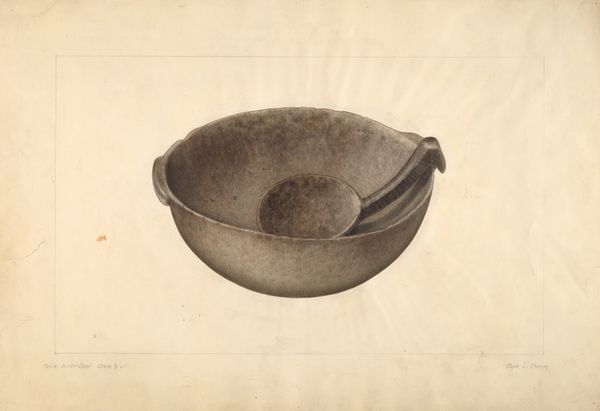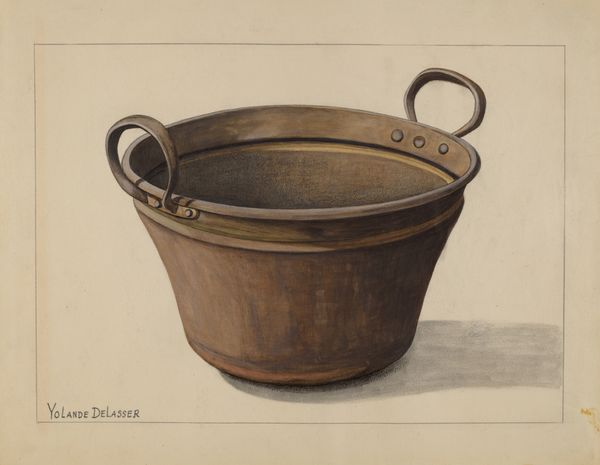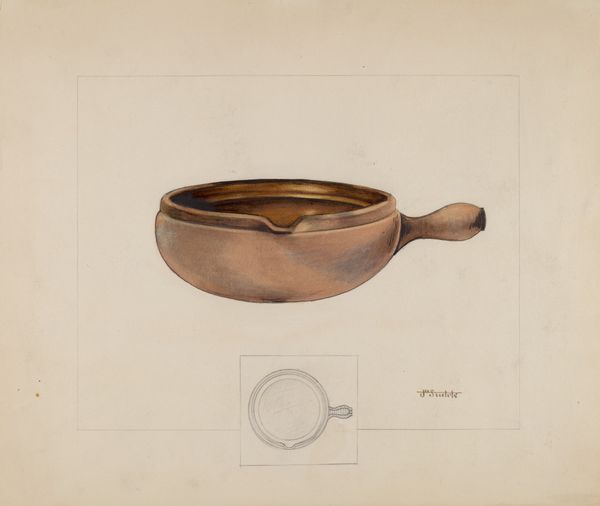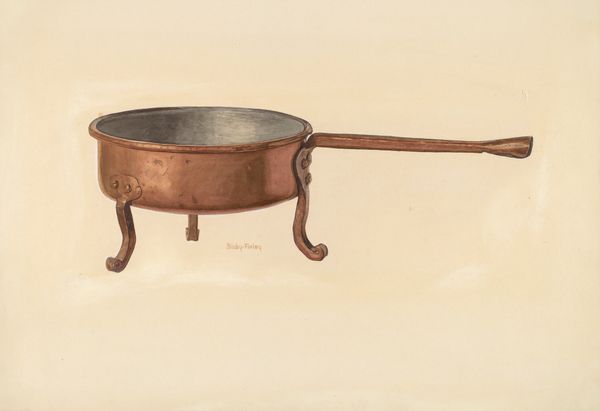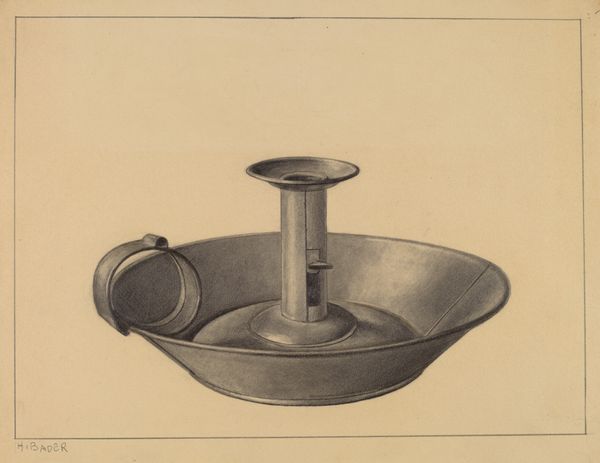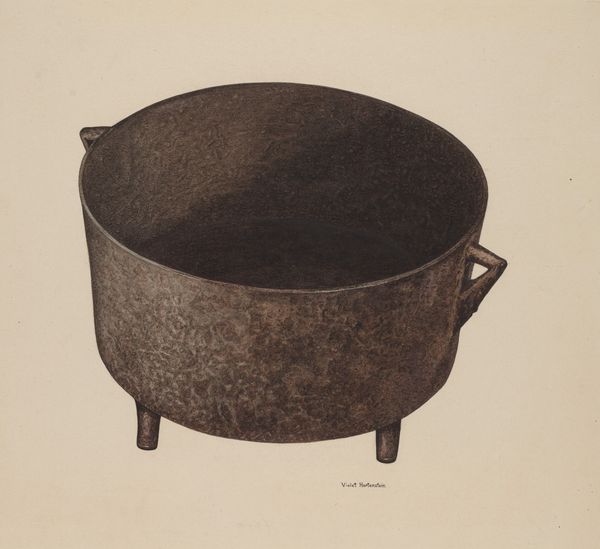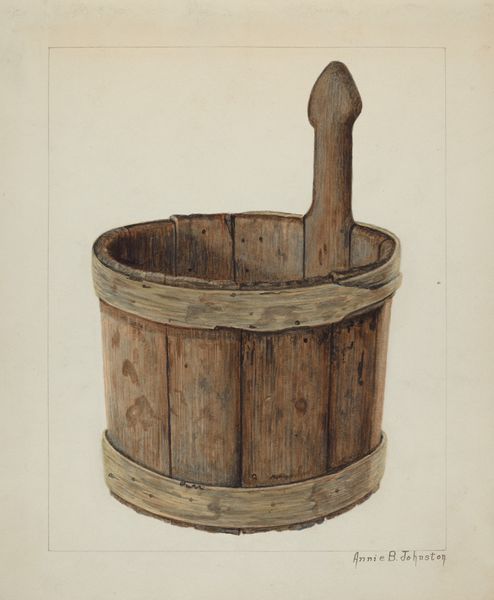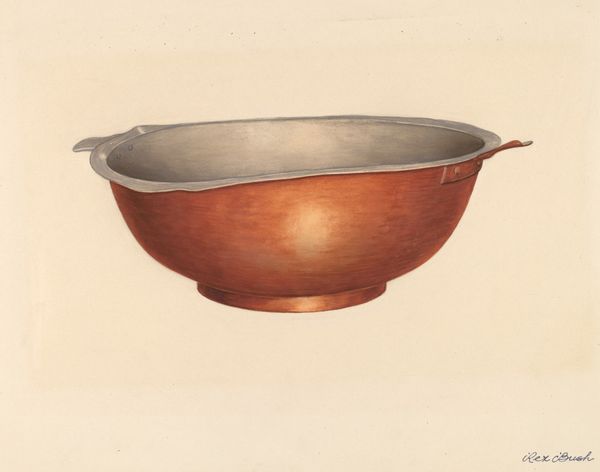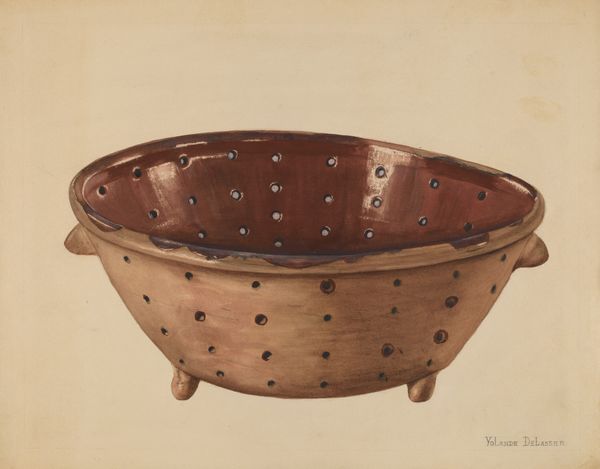
drawing, coloured-pencil, watercolor
#
drawing
#
coloured-pencil
#
water colours
#
watercolor
#
coloured pencil
#
watercolor
Dimensions: overall: 23 x 28 cm (9 1/16 x 11 in.)
Copyright: National Gallery of Art: CC0 1.0
Curator: Let’s discuss George Seideneck's "Copper Kettle," circa 1937, rendered with watercolor and colored pencil. What strikes you about it? Editor: Its stillness. It's an unremarkable object, a vessel, but rendered with so much precision. There's a sense of almost meditative quietude evoked by its balanced form and warm palette. The tonality emphasizes its three-dimensional volume. Curator: Considering the time it was created, during the Depression, one wonders if there is a narrative about home life. Beyond the form, consider the social context. Was it perhaps about the importance of simple, domestic tools for survival during the hardest of times? Did having the tools to prepare food in a time of scarcity reflect a means of self-sufficiency and a resistance to systemic economic injustice? Editor: I concede to a cultural reading of that type. However, the way light plays across the surface, defining its curvature and the subtle gradations of color… it speaks to the artist's command of technique and his capacity to extract visual harmony from humble materials. The placement of the object creates a balanced visual space. Curator: But who had access to that copper kettle and who did not? For some, it would have represented an unattainable luxury while it could have been ordinary to others. This speaks to divisions based on class and racialized income inequality, no? Editor: Certainly, but even considering the artwork's subject in social hierarchies, can't we also appreciate Seideneck's arrangement of elements in the frame? The composition directs the eye—the curvature is graceful; the handles are meticulously drawn. It exists as an object of utility and refined craft. Curator: To overlook the historical implications of an object representing domesticity within the specific time seems to me to do the work an injustice. A home should be a safe haven but gendered expectations, economic pressures and limited access prevented this ideal. Editor: I’m persuaded of its layered historical meaning. Perhaps the power rests not just in formal representation, but how its cultural meaning is also open to discussion. Curator: Indeed. Recognizing its dual resonance only enhances appreciation.
Comments
No comments
Be the first to comment and join the conversation on the ultimate creative platform.


